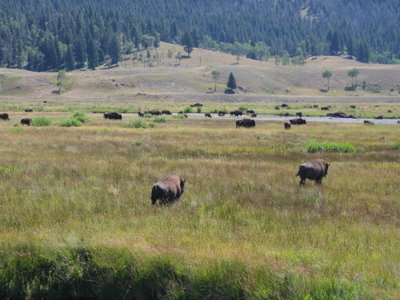 Note: Guest blogger, Ilse Brukner (aka Mom), gives us version of the conclusion of the bus story. --DRDid you ever sell a bus on eBay? We did, and I can tell you a tale.
Note: Guest blogger, Ilse Brukner (aka Mom), gives us version of the conclusion of the bus story. --DRDid you ever sell a bus on eBay? We did, and I can tell you a tale. It’s a long story that started in early January when we moved to Hemet in Southern California. Our dear bus moved with us and landed in the parking lot of an RV storage area. Of course, there was the thought to sell it as soon as possible, but fate (and I must say greed) and inexperience interfered.
Having lived 23 years, mostly in winter, in my husband Ali’s masterpiece, there were strong heartstrings connected to it which had to be severed.
We had purchased this school bus at the end of 1979. They call it a pusher because the engine is in the rear and pushes the bus down the road. It took us four years of dedicated work – Ali, the mechanical design engineer, using his wide experience in design, welding, handling tools expertly, was the very knowledgeable boss. I, awkward in handling tools, called myself the unskilled labor. At the end of this adventure I brandished the paintbrush like a pro, worked along beside him good naturedly and gave him moral support when needed. After we converted the bus into our living quarters of the future, I could repeat my first statement before starting ”I will move into a bus but … it has to be the nicest converted bus about.” And it was and is!
Then with the new year of 2006 came the time to start cutting the umbilical cord and put it up for sale. Blinded by the love and work that went into it and with the recommendation from daughter and her experienced salesman husband, we advertised it at $19,999. Doris had made a professional looking detailed write-up with photos that should get results.
Hmm, it was quiet out there!
We went down in price to $17,000, to $12,000. A few nibbles, nothing serious. Down to $7,000 and things became lively. Two different women expressed interest and were enthusiastic admirers of the interior, but the first dropped out not trusting the mechanical innards of the vehicle. With a bleeding heart we almost considered giving it away or sell it for the amount spent on storage and insurance. Then the second woman offered $ 4,000. And we accepted, BUT…(there is always a but, isn’t there?)…she kept asking questions, continued to research any other avenue open to her and then focused on the condition of the tires. She never realized that a bus tire is not a passenger car tire and has more life in it than a 40-year-old man, even if it is a bit cracked by the sun.
When for two weeks our lively email exchange suddenly dried up, we waited for a couple more weeks, and then turned to eBay.
PRAISE BE TO EBAY! For nothing in the world I would not have missed that experience. It was pure fun!
Signing up for a one week auction and asking $500, the bidding started within a few hours and up, up it went. When it reached $2,000 there was a lull which lasted through the middle of the week. It got lively again when the weekend as the end of the auction approached. We looked at that computer screen in astonishment and glee. Friday and Saturday – the last two days – we stared at that screen almost continuously, answered questions promptly and politely. It passed $3,000 and slowly crept higher.
But the end of it all was dramatic not only for us but probably for the three final bidders as well. One experienced guy had faithfully bid again and again. Saturday morning the telephone rang and somebody actually wanted to SEE the bus. Living a three hours drive away, he turned up, looked at the bus, drove it around the storage area and with a big grin on his face said he liked it.
The last half hour of our auction came and excitement mounted to even greater heights. Three bidders were bidding against each other, one of them Ken, our only customer to see the goods. They were popping in and out of the battle. Ken wasn’t sitting on top as the clock counted down to the last minute but, whoopedidoo! with 5 seconds left before closing, he came in with the last offer. We rooted loudly for him. We had met him and liked him.
The bus sold for $4,801.38.
Hey, don’t you think that dear, old bus deserves a round of applause, too?
We are glad it found a good owner who appreciates it and hopefully will love and cherish it as we did. It gave us 23 years of bliss, freedom and happiness. May the new owner continue in the same way. Good luck, Ken!
Does eBay give a discount for advertising?
For a video of the new owners driving it out of the storage yard, click here. If you look closely you can see John and Dad escorting it down the driveway.



















































